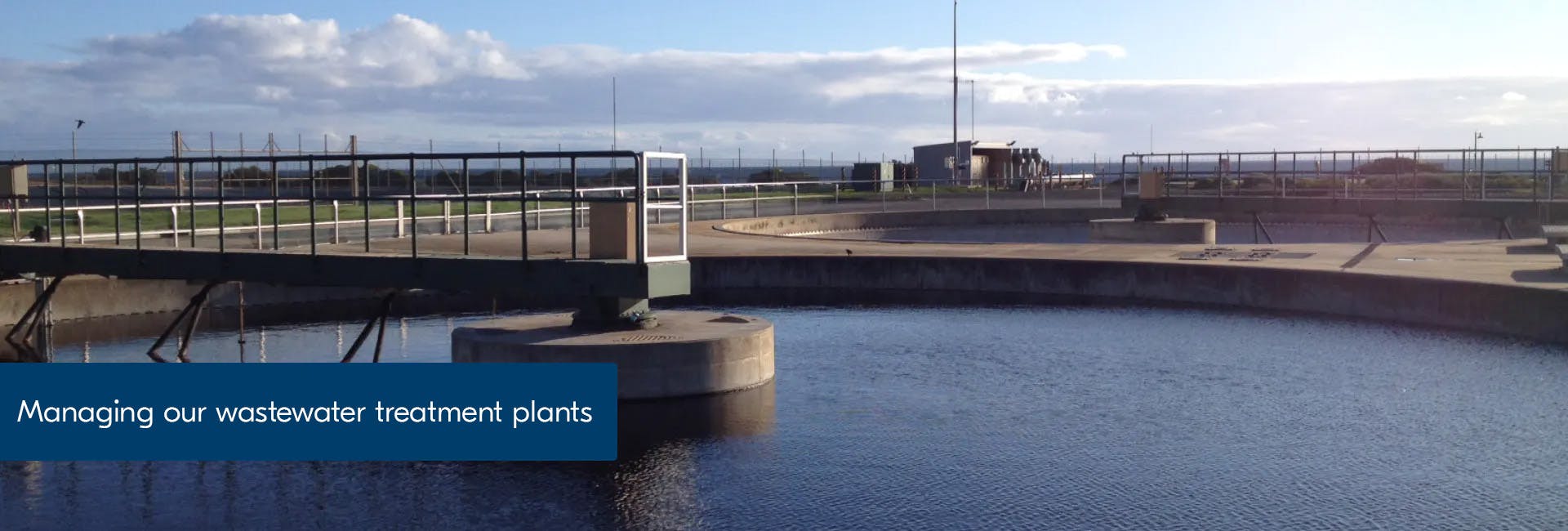Managing our wastewater treatment plants
Keeping the environment safe and you informed
Adelaide has three major wastewater treatment plants at Bolivar, Glenelg and Christies Beach. We also have a smaller treatment plant at Aldinga and 20 more treatment plants in the Adelaide Hills and regional areas.
Find out more about:
Bolivar WWTP | Glenelg WWTP | Christies Beach WWTP | Whyalla WWTP
Reusing and returning treated wastewater to the environment
Our wastewater treatment plants do more than manage sewage. We actively operate them to consistently give back to the community and the environment.
Supported by the Australian Water Quality Centre, our Adelaide-based internationally recognised laboratories, our wastewater treatment plants are equipped with the technology and processes, and our people have the expertise needed to treat wastewater so it can be reused or safely returned to the environment. In fact, we recycle more than 32 per cent of wastewater for use by customers.
Recycled water is used to irrigate parklands, community grounds and the horticulture and viticulture industries. It is also piped directly to residential homes in Mawson Lakes, Bowden and Seaford for flushing toilets and watering gardens.
Smart technology in our sewerage network
We use advanced smart technology to monitor odour, movement and levels in our sewerage system so we can understand where an issue may exist before it impacts our infrastructure and the community. In addition, the installation of smart sensors on pumps in our network helps us identify and forecast when a pump repair or replacement is needed before failure occurs.
Biogas
The bacteria used in some of our treatment processes create gases, including methane, called biogas. We capture enough biogas to create 15 gigawatts per hour of power per year. That’s about half the energy needs for all three wastewater treatment plants in metropolitan Adelaide – Bolivar, Glenelg and Christies Beach.
Biosolids
Organic material from the wastewater process is collected and treated to make it safe for South Australian farmers, who have been using them as a compost since the 1960s. We call these materials biosolids and farmers use them to improve their soils and crops. Demand for biosolids produced by our Bolivar Wastewater Treatment Plant currently exceeds our annual output of 35,000 tonnes.
Investing in the network
By making thoughtfully planned investment over time that is aligned with forecast customer and asset needs, we can keep customer prices as low and stable as possible, while maintaining an appropriate balance between cost, service provision and risk.
Between 2020 and 2024, we are investing $534 million to:
- renew existing sewerage assets – $221 million
- expand the sewerage system to meet future growth demand – $108 million
- improve our network to ensure we continue to meet existing and new external responsibilities and improve customer service – $205 million.
Find out more about:
Bolivar WWTP | Glenelg WWTP | Christies Beach WWTP | Whyalla WWTP



